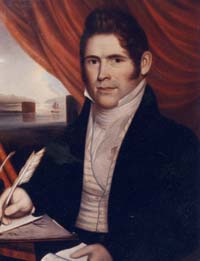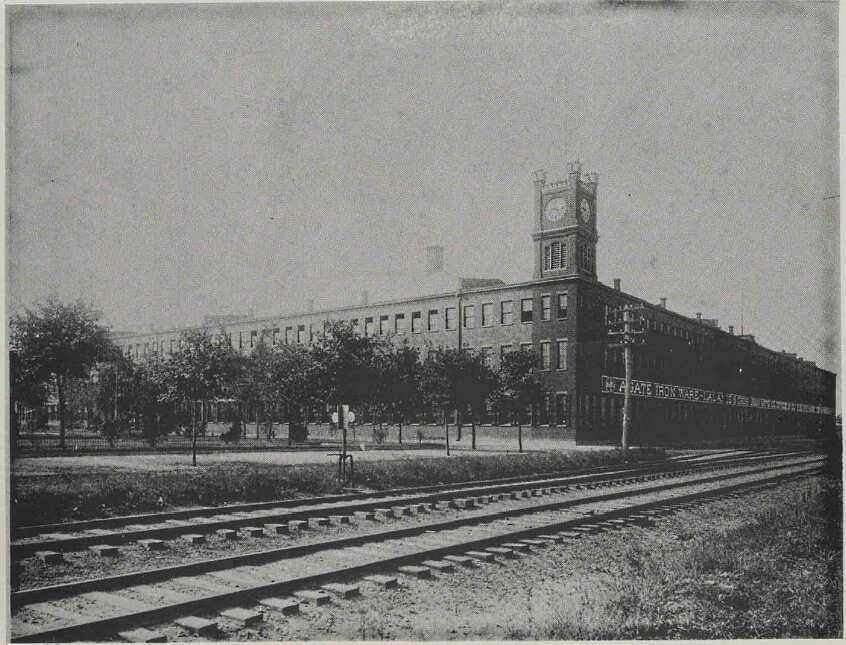It’s a more complicated question that you would think: When was Woodhaven founded?
The short answer is this: It was originally founded as Woodville in 1835 and renamed Woodhaven in 1853 when the village applied for a Post Office only to be denied because there was already a Woodville, New York.
And a precise answer could be July 1, 1835 when John R. Pitkin purchased the first piece of property in the village. Pitkin has long been considered the founder of Woodhaven and it was in 1935 that residents of Woodhaven celebrated the community’s centennial.
Pitkin purchased the land as part of his grand scheme to develop a brand new city; one that Pitkin hoped would replace New York City. In fact, he was using New York City as the basis of the name for his planned city: East New York.
The land purchased by Pitkin stretched from Brooklyn to Long Island and Woodville was earmarked to be the industrial section, with lots of factories and farms and houses for the workers.

But the Panic of 1837 launched a major recession that lasted into the 1840s and a lot of investors, Pitkin included, lost tremendous amounts of money. As a result, Pitkin had to sell off large tracts of land to cover his losses and plans for a giant East New York were dashed (though the name lives on, to this day, in Brooklyn).
That answers the question of when Woodhaven was founded but the question of where Woodville/Woodhaven was actually located is a little more difficult.
Today, the residential section of Woodhaven extends from Park Lane South to Atlantic Avenue. But in those days, this huge piece of land consisted mostly of farms (and one giant race track, The Union Course).
The residential section of Woodhaven lived south of Atlantic Avenue, in a section that is known today as Ozone Park. In those days it was called Woodhaven Village and it housed many of the neighborhood’s earliest settlers and important families.
Woodhaven Village really took off with the purchase of a nearby factory by partners Florian Grosjean and Charles LaLance. The factory began pumping out metal kitchenware made from tin through a unique stamping process and was an immediate success.
Grosjean enticed many of his countrymen to come here from France and set them up in row houses that he owned along University Place (now 95th Avenue). As a result, not only did he have a strong workforce but he was also collecting rent.
At that time, it was estimated that 8 out of every 10 people in Woodhaven were tied financially to the factory. If they didn’t work at the factory, their spouse did. Or they ran a business that depended on the factory.
So when the Great Fire of 1876 destroyed the factory, many of the workers figured they were out of a job and were preparing to leave. But Grosjean persuaded them to stay and help him rebuild from scratch.
And in place of the old wooden factory, a new complex was built, one with a large clock tower that overlooked the entire community, as if to proclaim that nothing was going to drive them from this town. And that clocktower stands tall to this day, 143 years later.
Although the entire factory did not survive and the business went under in the 1950s, it marked the rebirth of the community. The factory not only survived, it prospered and helped bring railroads and lighting to Woodhaven, turning it from a sleepy village into a bustling busy factory town, very much in line with what Pitkin has envisioned back in the 1830s.
And so, when I’m asked when Woodhaven was founded I try and answer it this way: It’s always been here, from the Yamecah Indians through the earliest settlers until it was born as Woodville in 1835, reborn as Woodhaven in 1835 and reborn yet again in 1876, eventually giving birth to a second neighborhood, Ozone Park.
Pretty straightforward, isn’t it?




































